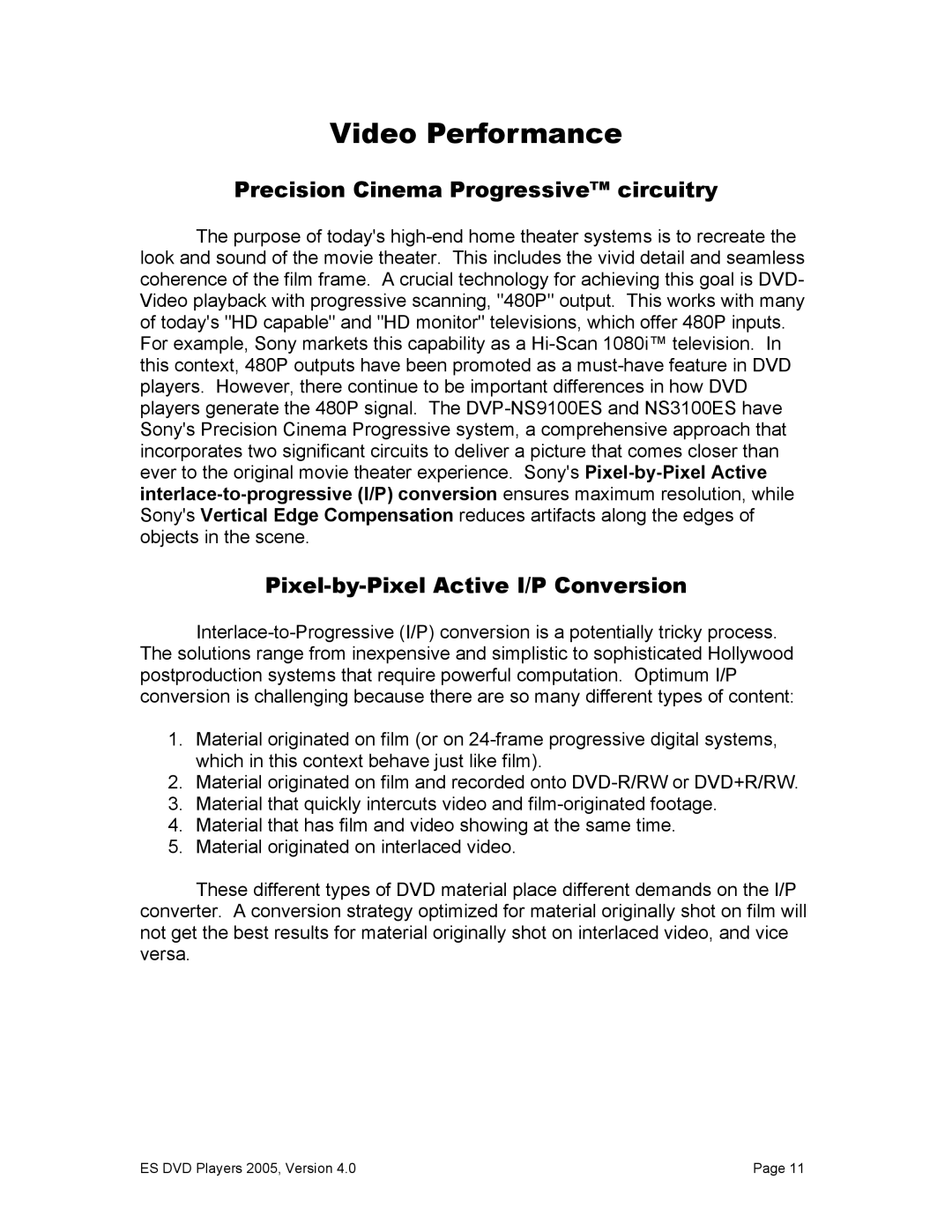Video Performance
Precision Cinema Progressive™ circuitry
The purpose of today's high-end home theater systems is to recreate the look and sound of the movie theater. This includes the vivid detail and seamless coherence of the film frame. A crucial technology for achieving this goal is DVD- Video playback with progressive scanning, "480P" output. This works with many of today's "HD capable" and "HD monitor" televisions, which offer 480P inputs.
For example, Sony markets this capability as a Hi-Scan 1080i™ television. In this context, 480P outputs have been promoted as a must-have feature in DVD players. However, there continue to be important differences in how DVD players generate the 480P signal. The DVP-NS9100ES and NS3100ES have Sony's Precision Cinema Progressive system, a comprehensive approach that incorporates two significant circuits to deliver a picture that comes closer than ever to the original movie theater experience. Sony's Pixel-by-Pixel Active interlace-to-progressive (I/P) conversion ensures maximum resolution, while Sony's Vertical Edge Compensation reduces artifacts along the edges of objects in the scene.
Pixel-by-Pixel Active I/P Conversion
Interlace-to-Progressive (I/P) conversion is a potentially tricky process. The solutions range from inexpensive and simplistic to sophisticated Hollywood postproduction systems that require powerful computation. Optimum I/P conversion is challenging because there are so many different types of content:
1.Material originated on film (or on 24-frame progressive digital systems, which in this context behave just like film).
2.Material originated on film and recorded onto DVD-R/RW or DVD+R/RW.
3.Material that quickly intercuts video and film-originated footage.
4.Material that has film and video showing at the same time.
5.Material originated on interlaced video.
These different types of DVD material place different demands on the I/P converter. A conversion strategy optimized for material originally shot on film will not get the best results for material originally shot on interlaced video, and vice versa.
